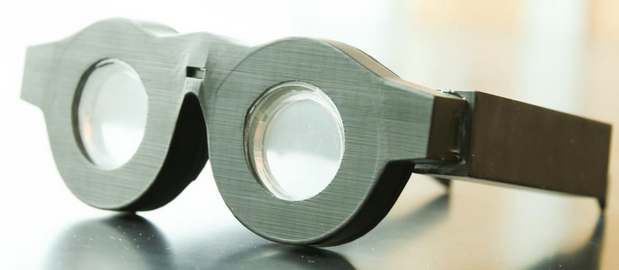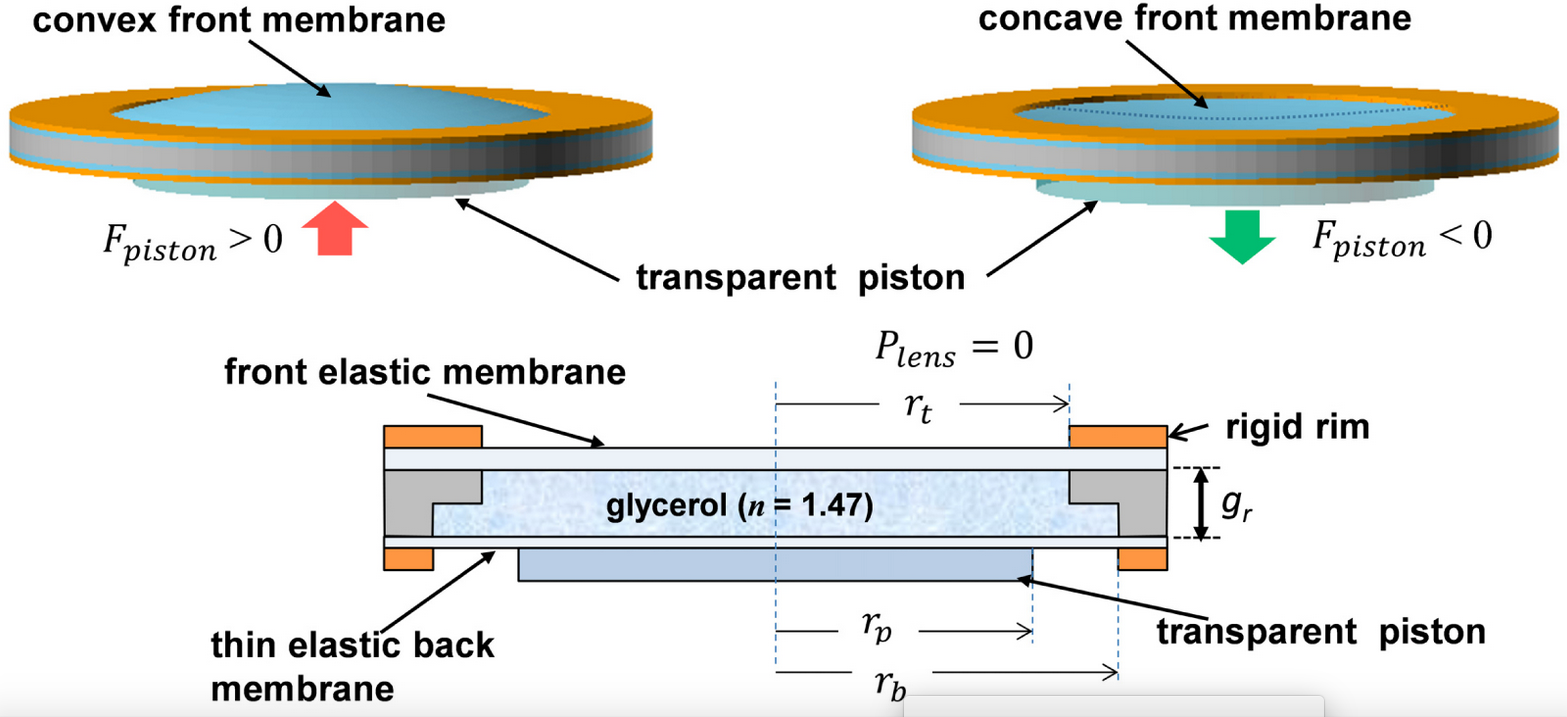These may be the last glasses you will ever need to buy
January 27, 2017

Early prototype of “smart glasses” with liquid-based lenses that can automatically adjust the focus on what a person is seeing, whether it’s far away or close up. The battery-powered frames can automatically adjust the focal length. Researchers expect to have smaller, lighter frames and packaged technology within three years. (credit: Dan Hixson/University of Utah College of Engineering)
Don’t throw away your bifocals or multiple glasses yet, but those days might soon be over. A team led by University of Utah engineers has created “smart glasses” with liquid-based lenses that can automatically adjust the focus on what you’re seeing, at any distance.
They’ve created eyeglass lenses made of glycerin, a thick colorless liquid, enclosed by flexible rubber-like membranes in the front and back. The rear membrane in each lens is connected to a series of three mechanical actuators that push the membrane back and forth like a transparent piston, changing the curvature of the liquid lens and therefore the focal length between the lens and the eye.

Simplified schematic of soft-membrane liquid lens (excluding actuators). The lens optical power is adjusted by vertically displacing the fluid with a transparent piston, deflecting the top membrane and changing its curvature. (credit: Nazmul Hasan et al./Optics Express)
In the bridge of the glasses is a distance meter that measures the distance from the glasses to an object via pulses of near-infrared light. When the wearer looks at an object, the meter instantly measures the distance and tells the actuators how to curve the lenses. If the user then sees another object that’s closer, the distance meter readjusts and tells the actuators to reshape the lens for farsightedness.
The lenses can change focus from one object to another in 14 milliseconds (faster than human reaction time). A rechargeable battery in the frames could last more than 24 hours per charge, according to electrical and computer engineering professor Carlos Mastrangelo, senior author of an open-access paper in a special edition of the journal Optics Express.
Before putting them on for the first time, users would input their eyeglasses prescription into an accompanying smartphone app, which then calibrates the lenses automatically via Bluetooth. Users only need to do that once, except for when their prescription changes over time. Theoretically, eyeglass wearers will never have to buy another pair again since these glasses would constantly adjust to their eyesight.
A startup company, Sharpeyes LLC, has been created to commercialize the glasses. The project was funded with a grant from the National Institutes of Health and the National Institute of Biomedical Imaging and Bioengineering.
University of Utah | Smart glasses that automatically focus on whatever you look at
Abstract of Tunable-focus lens for adaptive eyeglasses
We demonstrate the implementation of a compact tunable-focus liquid lens suitable for adaptive eyeglass application. The lens has an aperture diameter of 32 mm, optical power range of 5.6 diopter, and electrical power consumption less than 20 mW. The lens inclusive of its piezoelectric actuation mechanism is 8.4 mm thick and weighs 14.4 gm. The measured lens RMS wavefront aberration error was between 0.73 µm and 0.956 µm.